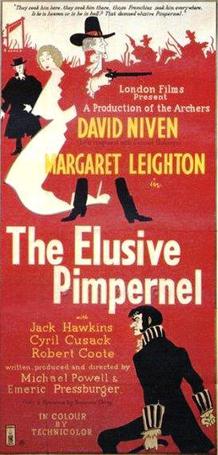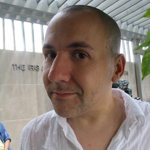
Early music generally comprises Medieval music (500–1400) and Renaissance music (1400–1600), but can also include Baroque music (1600–1750). Originating in Europe, early music is a broad musical era for the beginning of Western classical music.

Edward James Hughes was an English poet, translator, and children's writer. Critics frequently rank him as one of the best poets of his generation and one of the twentieth century's greatest writers. He was appointed Poet Laureate in 1984 and held the office until his death. In 2008 The Times ranked Hughes fourth on its list of "The 50 greatest British writers since 1945".

An ogre is a legendary monster depicted as a large, hideous, man-like being that eats ordinary human beings, especially infants and children. Ogres frequently feature in mythology, folklore, and fiction throughout the world. They appear in many classic works of literature, and are most often associated in fairy tales and legend.

Fantastic Beasts and Where to Find Them is a 2001 guide book written by British author J. K. Rowling about the magical creatures in the Harry Potter universe. The original version, illustrated by the author herself, purports to be Harry Potter's copy of the textbook of the same name mentioned in Harry Potter and the Philosopher's Stone, the first novel of the Harry Potter series. It includes several notes inside it supposedly handwritten by Harry, Ron Weasley, and Hermione Granger, detailing their own experiences with some of the beasts described, and including inside jokes relating to the original series.

John Howe is a Canadian book illustrator and concept designer, best-known for his artwork of J. R. R. Tolkien's Middle-earth. One year after graduating from high school, he studied in a college in Strasbourg, France, then at the École des arts décoratifs in the same town.
The Carnegie Medal for Illustration is a British award that annually recognises "distinguished illustration in a book for children". It is conferred upon the illustrator by the Chartered Institute of Library and Information Professionals (CILIP) which inherited it from the Library Association. CILIP is currently partnered with the audio technology company Yoto in connection with the award, though their sponsorship and the removal of Greenaway’s name from the medal proved controversial.

Professor Branestawm is a series of thirteen children's books written by the English author Norman Hunter. Professor Theophilus Branestawm is depicted throughout the books as the archetypal absent-minded professor and his name is a variant of the word "brainstorm". The first two books in the series were first published in the 1930s, but the other 11 appeared much later, from 1970 onwards.

Barrett is the second and final studio album of new material released by former Pink Floyd frontman Syd Barrett. Recording began at Abbey Road Studios on 26 February 1970, and lasted for 15 sessions until 21 July. The album was produced by Pink Floyd's David Gilmour and Richard Wright, who also contributed on bass and keyboards respectively, along with previous Madcap contributor Jerry Shirley on drums.

The Elusive Pimpernel is a 1950 British period adventure film by the British-based director-writer team of Michael Powell and Emeric Pressburger, based on the novel The Scarlet Pimpernel (1905) by Baroness Emmuska Orczy. It was released in the United States under the title The Fighting Pimpernel. The picture stars David Niven as Sir Percy Blakeney, Margaret Leighton as Marguerite Blakeney and features Jack Hawkins, Cyril Cusack and Robert Coote. Originally intended to be a musical, the film was re-worked as a light-hearted drama.
Frederick "Ted" William Holiday (1921–1979) was an English journalist, who wrote books about angling and also the Loch Ness monster, developing a hypothesis about its nature.

David William Gentleman is an English artist. He studied art and painting at the Royal College of Art under Edward Bawden and John Nash. He has worked in watercolour, lithography and wood engraving, at scales ranging from platform-length murals for Charing Cross Underground Station in London to postage stamps and logos.
"Jugband Blues" is a song by English rock band Pink Floyd, released on their second album, A Saucerful of Secrets, in 1968. Written by Syd Barrett, it was his sole compositional contribution to the album, as well as his last published for the band. Barrett and Pink Floyd's management wanted the song to be released as a single, but were vetoed by the rest of the band and producer Norman Smith.

Andrew Lambert is a British naval historian, who since 2001 has been the Laughton Professor of Naval History in the Department of War Studies, King's College London.

Michael Keith Billington is a British author and arts critic. He writes for The Guardian, and was the paper's chief drama critic from 1971 to 2019. Billington is "Britain's longest-serving theatre critic" and the author of biographical and critical studies relating to British theatre and the arts. He is the authorised biographer of the playwright Harold Pinter (1930–2008).

Colin Spencer was an English writer and artist who produced a prolific body of work in a wide variety of media after his first published short stories and drawings appeared in The London Magazine and Encounter when he was 22. His work included novels, short stories, non-fiction, vegetarian cookery books, stage and television plays, paintings and drawings, book and magazine illustrations. He wrote and presented a television documentary on vandalism, appeared in numerous radio and television programmes and lectured on food history, literature and social issues. For fourteen years he wrote a regular food column for The Guardian.

Laurence Daren King is an English novelist and children's writer. His debut novel, Boxy an Star, made the shortlist for the Guardian First Book Award and the ten finalists for the Booker Prize in 1999. He won the Nestlé Children's Book Prize gold medal in the 6 to 8-year-old readers category for Mouse Noses on Toast in 2006.

The bibliography of Charles III, King of the United Kingdom and 14 other Commonwealth Realms, is a list of approximately three dozen works which the King has written, co-written, illustrated or narrated, and includes works for which he has written a foreword, introduction or preface.
Hugh Walters was a British writer of juvenile science fiction novels from Bradley in the West Midlands region of the United Kingdom.

George Worsley Adamson, RE, MCSD was a book illustrator, writer, and cartoonist, who held American and British dual citizenship from 1931.
Andrew Timothy Davidson is a British artist. His book illustrations include two novels by Ted Hughes: The Iron Man and its sequel The Iron Woman (1993). Another is a 2002 edition of Jack London's The Call of the Wild. Some time after that, Andrew illustrated for the book Tales of the Peculiar by Ransom Riggs.














